Last Thursday, the General Accounting Office (GAO) slipped across the quarterdeck what may be one of the most important Navy-related reports of this decade, Navy Shipbuilding: Increased Use of Leading Design Practices Could Improve Timeliness of Deliveries
Yes, I know - for almost everyone this is not sexy - but it is so critically important. It is hard to read because it is about, well, process.
Process matters. Good processes win wars. Bad processes bring about national collapse.
Perhaps I’m having trouble explaining it - I’ll let them do it for me.
From Page 1;
Why This Matters
Changing maritime threats are pushing the U.S. Navy to increase its pace for designing and delivering new ships. Since 2009, GAO has used leading practices in commercial shipbuilding to evaluate the plans and execution of Navy shipbuilding programs. GAO’s numerous recommendations have spurred Navy action to improve acquisition practices and the use of taxpayer dollars. Yet, the Navy has continued to face persistent challenges in its ability to design.
GAO found that leading commercial ship buyers and builders prioritize shorter, predictable periods for design and construction, which result in delivering timely ships that meet current user needs. In contrast, the Navy’s approach often results in significantly longer design and construction cycle times for its shipbuilding programs’ lead ships. Comparison of Design and Construction Cycles for Selected Commercial and Navy Ships and deliver timely, affordable new ships that perform as expected. Computing power and digital design capabilities have rapidly changed in the 15 years since GAO first identified leading ship design practices. As a result, GAO’s examination of commercial industry’s current practices helps ensure that the activities and performance of the Navy’s shipbuilding programs are evaluated against cutting-edge practices used to design new ships efficiently and effectively.
I have long advocated that our accretion-encumbered acquisition system needs to be ripped up root-and-branch and modernized and streamlined … but alas, that requires Congressional action. I don’t see the critical mass in the House or Senate to do that anytime soon, so we will have to content ourselves with nibbl’n around the edges.
Do what you can and then hope for what is needed isn’t the best plan, but for now it is all we have.
This is the graphic that got my attention first.
I can already hear people getting defensive about “apples and oranges” when it comes to commercial ships and warships … but the inclusion of auxillary oilers in the above gives you a better benchmark to the dysfunction.
Though not directly mentioned, regulars won’t be surprised that this is one of my favorite sections. From the start of this blog 18-yrs ago, I have repeatedly railed against the warping ineffectiveness of Goldwater-Nichols and the whole Cult of the Joint.
Nice summary here how that self-licking and unnecessary cult delays and distorts.
This is a meaty report, so I won’t comment here on each section. Go get a fresh cup of coffee, put the phone direct to voicemail, and give it a read.
We all know what we are doing now does not work, and the Navy is incapable of fixing itself. As such, why not adopt the three recommendation to Congress and the eight for the Navy?




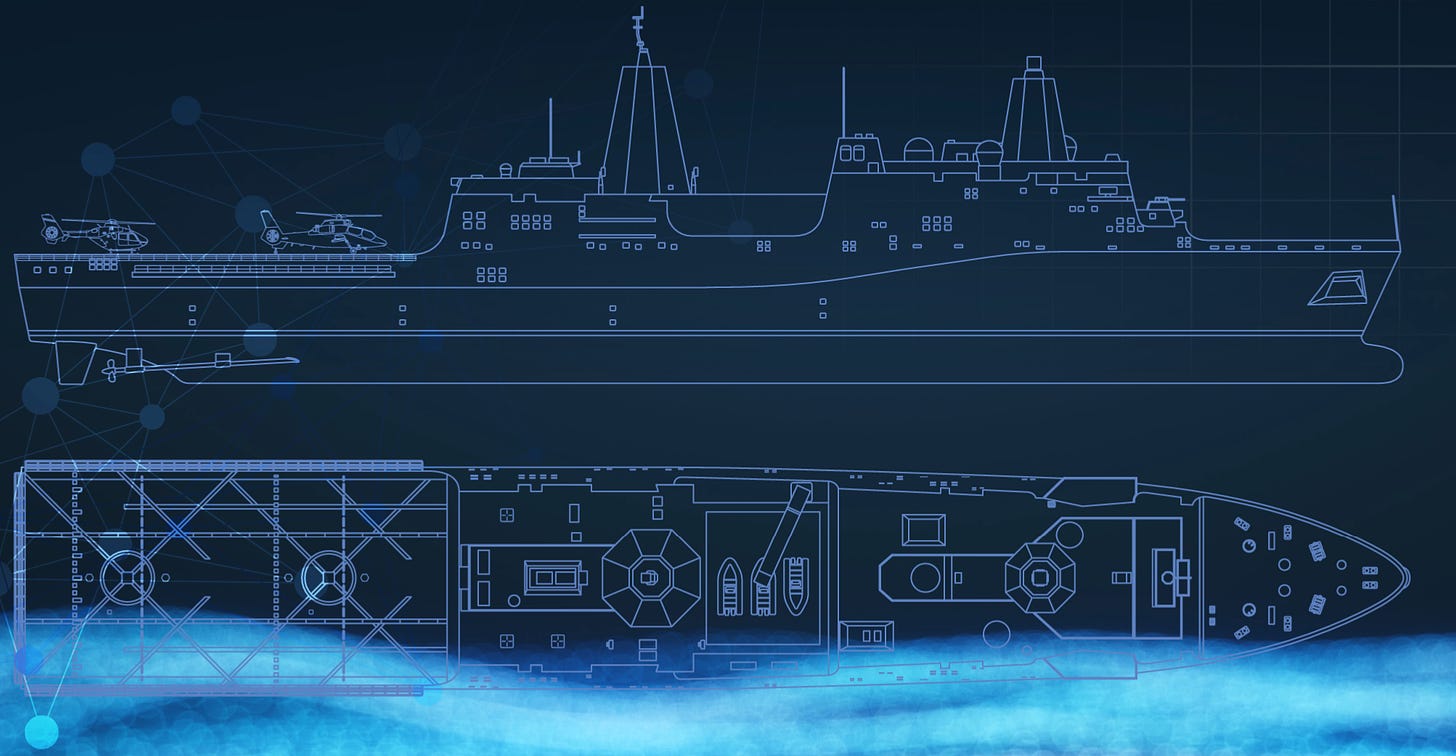
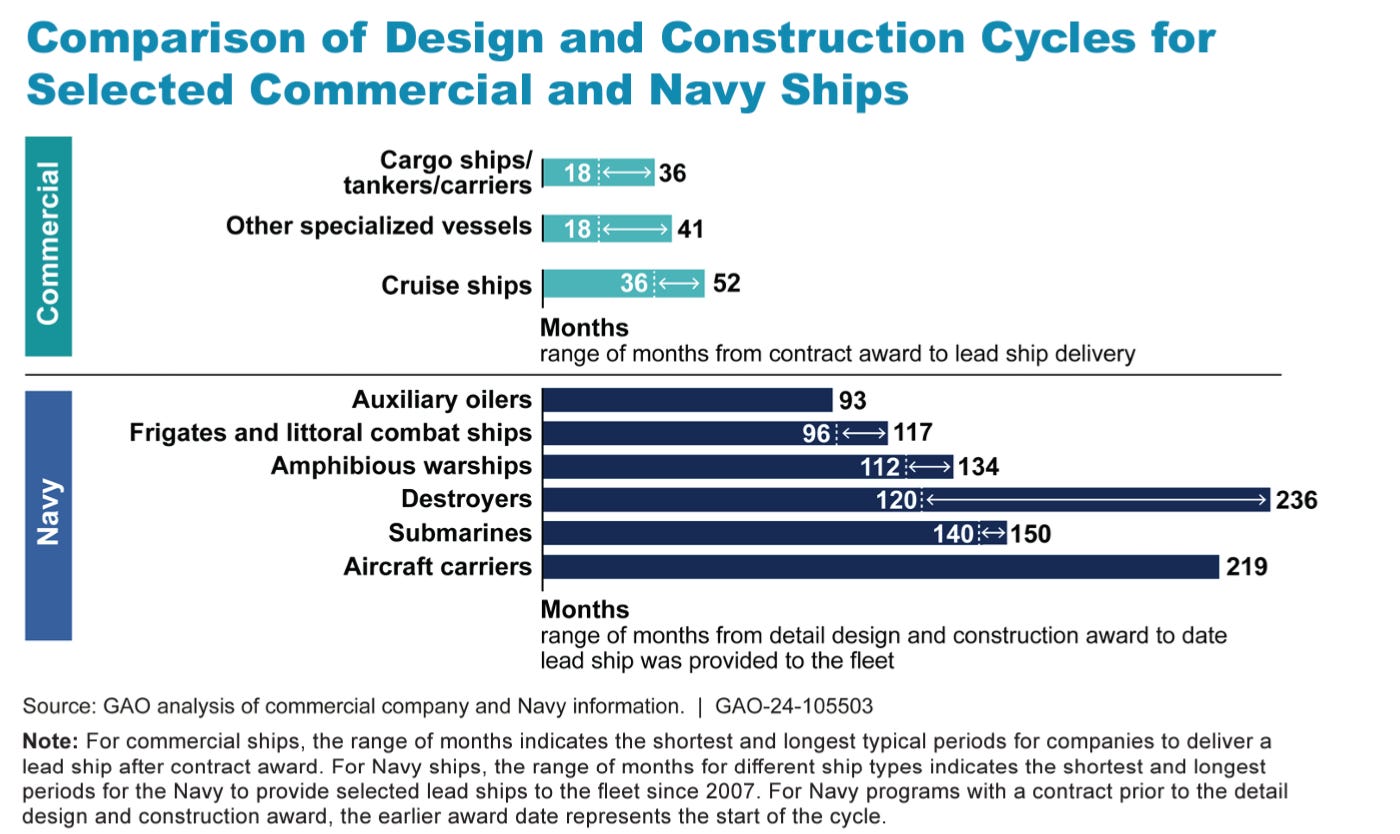
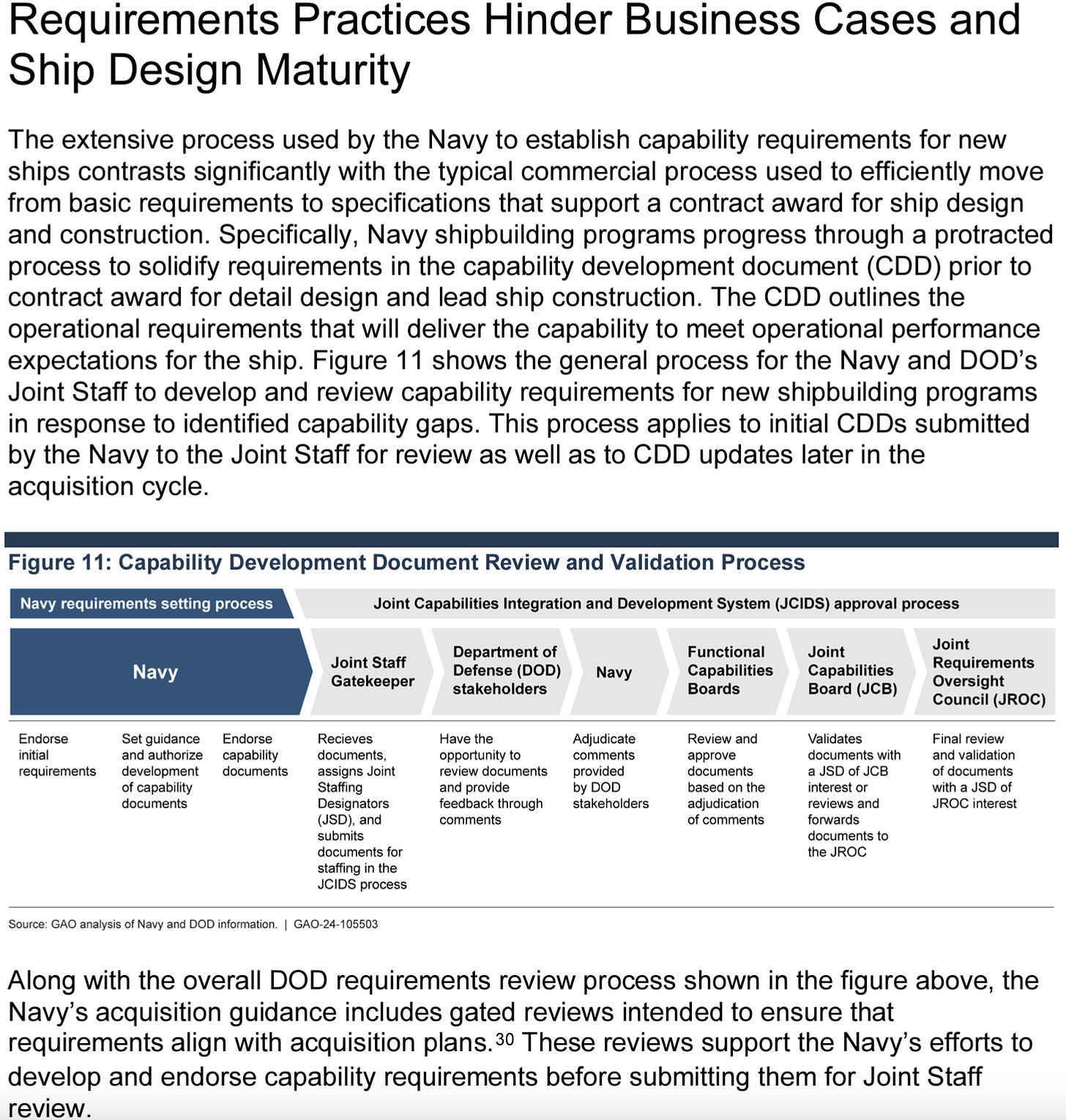
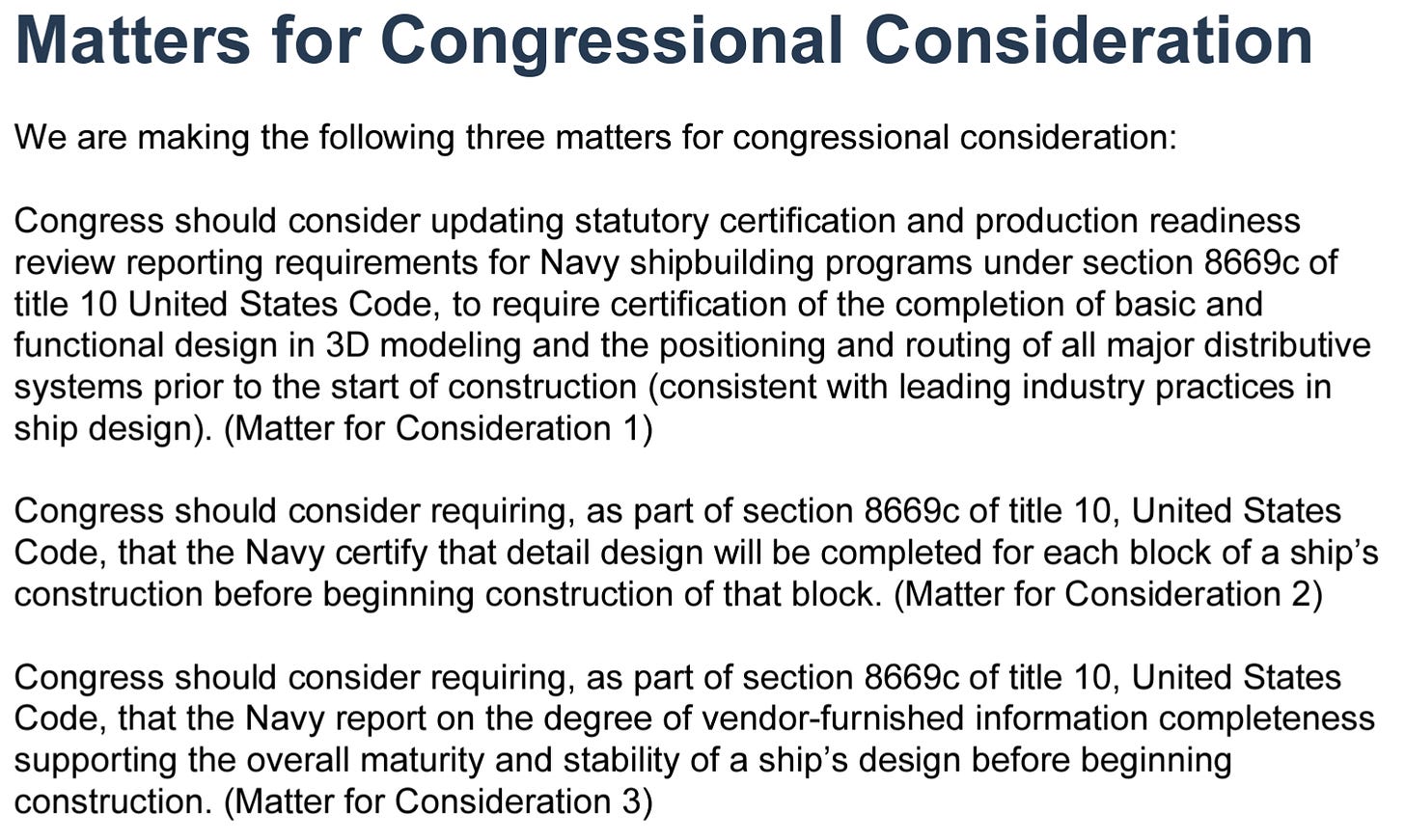
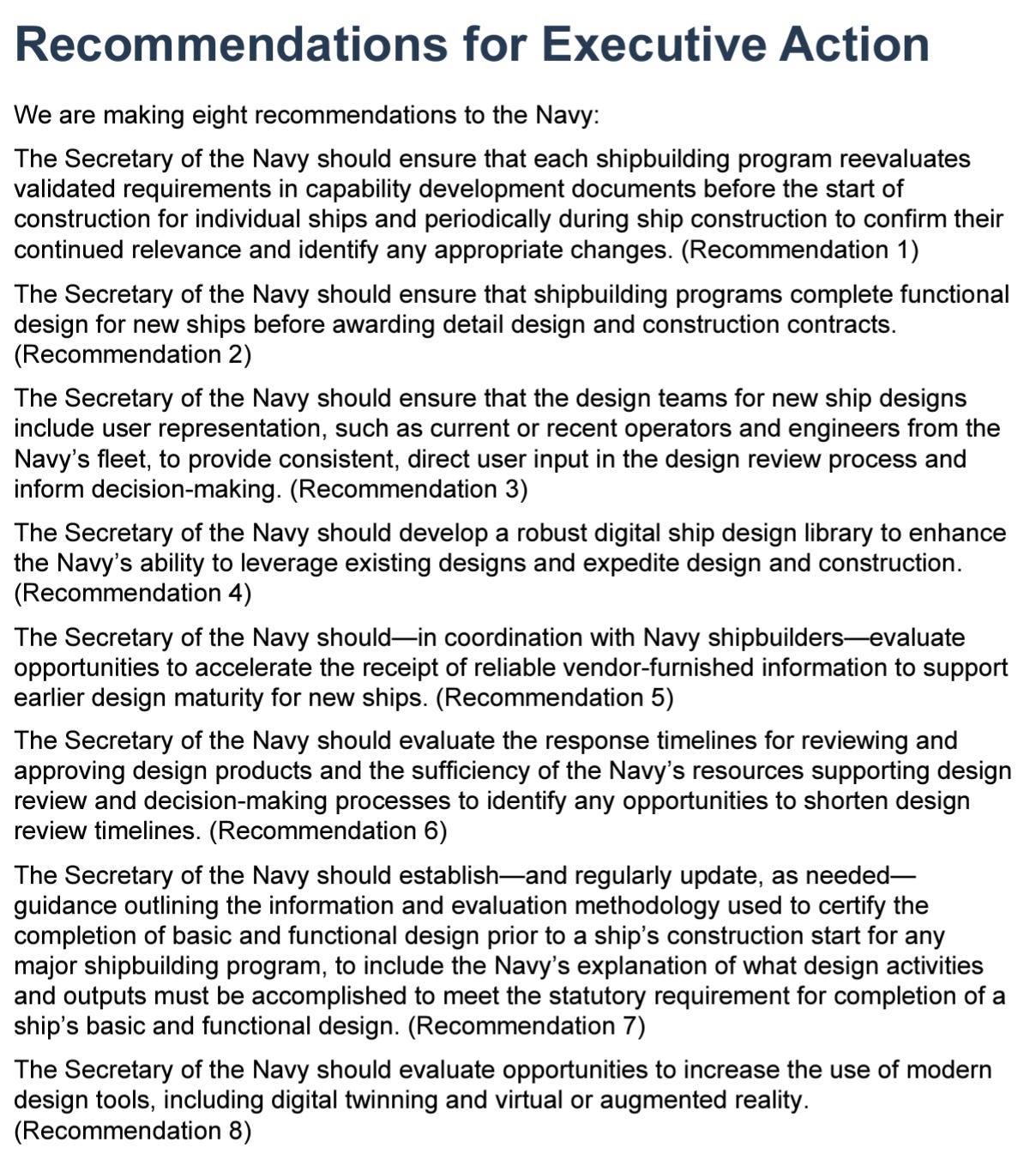
"How could a project fall so far behind schedule so quickly? One reason is that the Navy gave the OK to begin construction when the design was only 80 percent complete. This is a recurring problem for the Navy. Both the much-maligned Littoral Combat Ship and the far-over-budget and much-delayed aircraft carrier Gerald Ford were victims of this “we’ll figure it out later” approach.
What makes the frigate delay so alarming is that the Constellation was to be based on an existing design that the French and Italian navies have successfully deployed for years. In theory, that should have made construction go much more quickly and more smoothly. But apparently unable to abandon their “Americans know best” parochialism, the Navy lengthened, fattened, and up-weaponed the original design. Hence there will be no new Constellation-class frigates deployed for many years to come." https://thehill.com/opinion/national-security/4624326-almost-all-navy-shipbuilding-is-hopelessly-behind-schedule-as-war-looms/
The problem starts with the Navy's "Star Trek" mentality. When in the service I argued that LCS was a toothless fairy tale, as well as rail-guns, etc. The WWII priorities of firepower (#1, #2, #3), endurance, maneuverability, with habitability the last to be considered were replaced with today's pretty-looking and abysmally performing cruise-ships. The Navy has to decide to be a fighting force 1st. (Of course, there are other huge problems with a lack of a strategic focus on the part of Congress or the White House, —but then again we long ago abandoned the Constitutional mandate to maintain a Navy and raise Armies.)
OK now do Recruiting, because we're having trouble manning the ships we have now, much less crewing the hulls of sped up acquisitions.